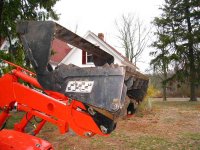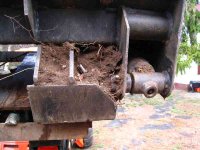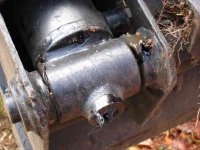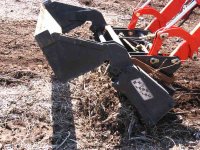Builder
Super Member
- Joined
- Feb 22, 2006
- Messages
- 6,155
- Tractor
- Kubota, AGCO, New Holland LB
That's just part of the process. Hopefully, if your zerks have guards aroung them they won't break off.
When I'm digging with my LB115, the dipper stick is always rubbing against the side of the trench packing dirt around the zerks. The bucket is the same way when digging or loading the zerk gaurds get packed with dirt.
When I'm digging with my LB115, the dipper stick is always rubbing against the side of the trench packing dirt around the zerks. The bucket is the same way when digging or loading the zerk gaurds get packed with dirt.





